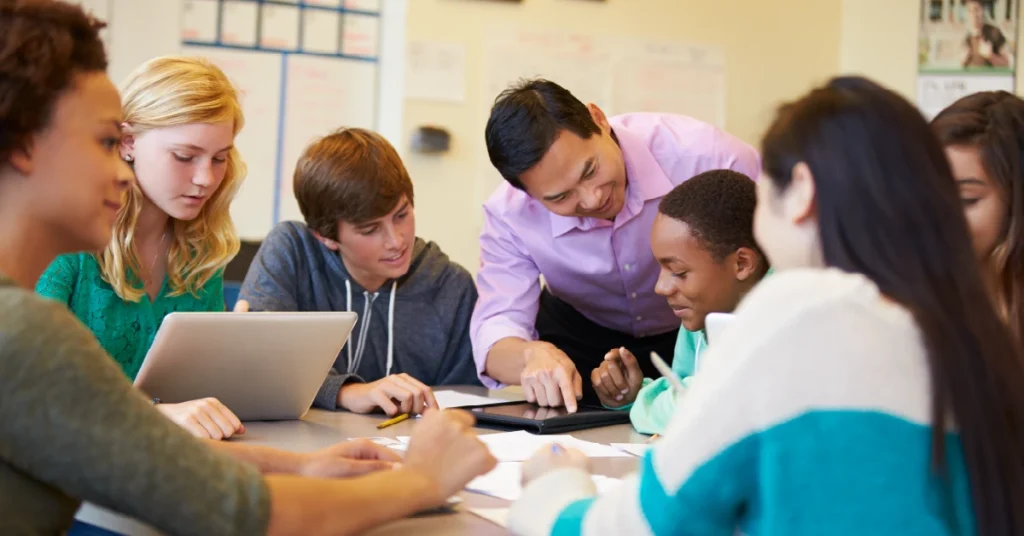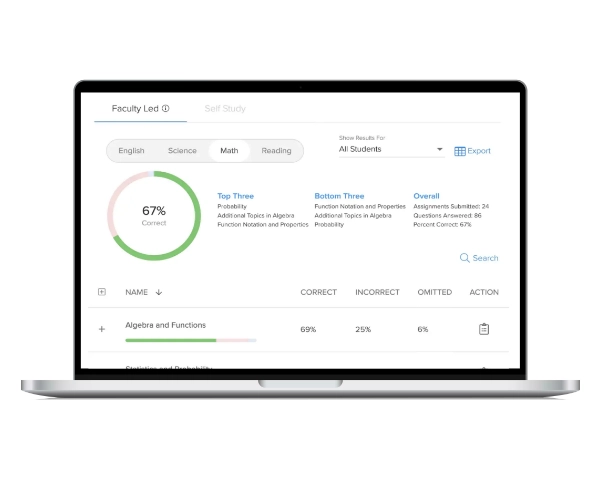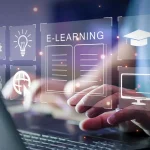Educators have many “superpowers,” but I would argue that one of our greatest is the ability to support students who have academically fallen behind by helping them close learning gaps. There are many ways to do this, but perhaps the most well-known–and effective–strategy is the implementation of small groups.
Teachers have used groups in their classrooms for a while, but in recent years, as AP® educators have begun to realize the benefits of small group instruction, this teaching strategy has gained more attention in the AP classroom. This has especially been the case since teachers have had to overcome extensive student learning loss caused by various challenges like the COVID-19 pandemic.
How Does Small Group Instruction Work…And Is It Really All It’s Cracked Up to Be?
To specifically help students close pandemic learning gaps, many educators have relied on small group instruction. In fact, recent NWEA research has shown that, even now, students still need personalized instruction in addition to their regular class time–about 4.5 months more in math and 4 months more in reading–to catch up with the majority of prepandemic students.2 Secondary students struggle with learning loss the most, as they typically learn at a slower rate and must learn more challenging academic concepts.3
Small group instruction is when a teacher helps a “small group” of students learn together. Typically, there are about three to six students in a small group, although this can vary based on the size and time restrictions of a class. The main purpose of small groups is personalized and accelerated learning, which is a means of differentiating instruction according to each student’s needs.1
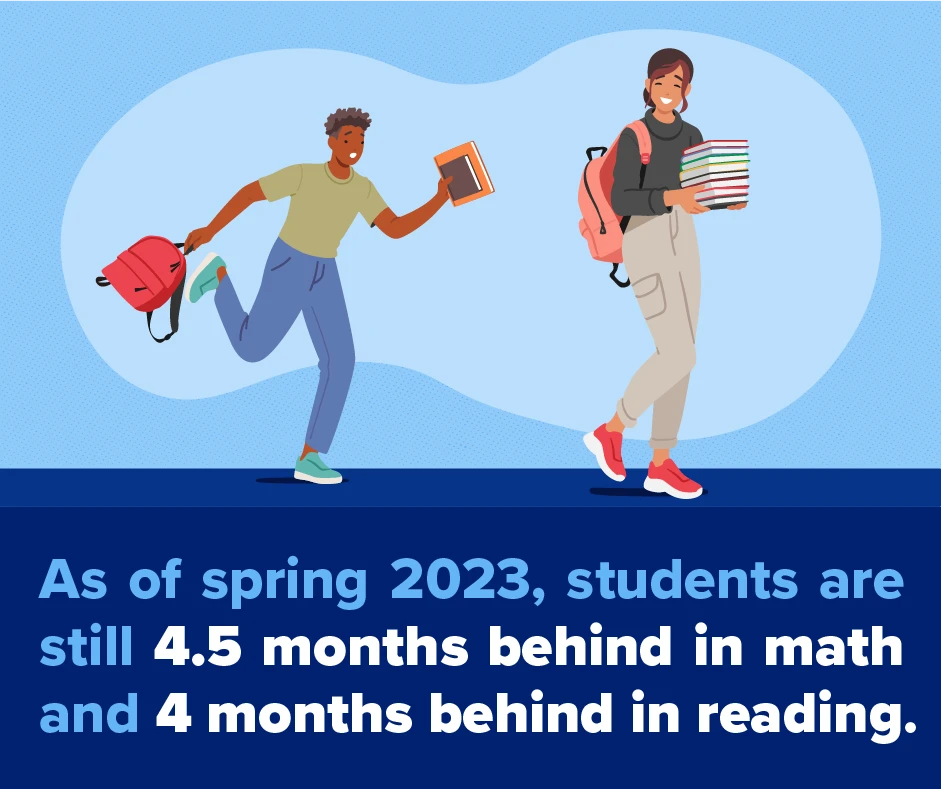
Implementing small groups into daily instruction can be a good way to support AP students, whether or not they struggle with learning misconceptions. One of the benefits of AP small group instruction is it allows teachers to personalize lessons for accelerated learning. Its very nature effectively addresses misconceptions that lead to learning gaps. Studies have consistently supported this idea, demonstrating that small group personalized learning closes instructional gaps far better than a fixed one-size-fits-all teaching strategy.4
Addressing Learning Gaps in AP With Small Groups
There are many reasons why small groups are so effective at helping AP students address learning loss. And so, the following list is by no means exhaustive:
Actionable Differentiation
Small group instruction helps AP educators teach better. Small groups make differentiation possible, allowing teachers a feasible way to adjust how they teach, how fast they go, and what they teach to fit each AP student’s needs. This helps because every student learns differently, and it makes it easier for them to understand tricky concepts.
Individualized Feedback & Goals
Teaching in small groups means meeting with fewer students at a time, so AP teachers can easily give immediate and personalized feedback. This real-time feedback helps AP students understand what they need to do to fix misunderstandings for accelerated learning. This is because teachers can help students set learning goals. Educators can also work with students to track their progress and adjust their goals as-needed.

Student Ownership & Engagement
During whole group lessons in class, some AP students may feel shy or worried about what others think, so they end up not talking much. But in small groups, these same students may feel less shy and more confident sharing their ideas. In small groups, AP students can join in more, ask questions, and work together with their classmates. When students engage with a lesson and take ownership of their learning, they begin to think more critically, make stronger learning connections, and feel like they belong.
Learning Through Collaboration
Teaching in small groups encourages AP students to talk to each other and collaborate. They can chat about ideas, share their thoughts, and team up on projects. This creates a friendly learning atmosphere and helps students get better at talking and working with others.
AP Small Group Instruction Strategies and Best Practices
Learning how to implement small group instruction in the AP classroom can vary from teacher to teacher, but there are some proven “best practices” that make them work well in any classroom, regardless of the subject area.
Group Students Based on Data
When deciding how to group students for small group instruction, use performance data from assessments, quizzes, and exit tickets.5 For example, UWorld’s Learning Tools for AP Courses provide great assessment data to help you identify students’ needs and group them effectively.
Keep Groups Small & Flexible
While considering different small group instruction strategies, it’s a good idea to keep the groups small (ideally 3 to 6 students).6 This way, it’s easier to focus on their needs. Groups should also change every few weeks based on updated student data and goals. This helps make sure each student gets the right support.
Set Goals & Track Progress
When implementing small group instruction, it’s important to set clear goals for each group of AP students.7 Decide what you want them to learn or improve upon. Then, track their progress every time you meet with them to see if they’re getting closer to those goals.
Set Expectations for Independent Work
When students are not in a small group, it’s important to have clear expectations for what they should do independently.8 Create independent and group learning tasks, like assigning UWorld multiple-choice questions for one task and practicing FRQs for another. This way, students stay engaged and continue learning while not working with their teacher.
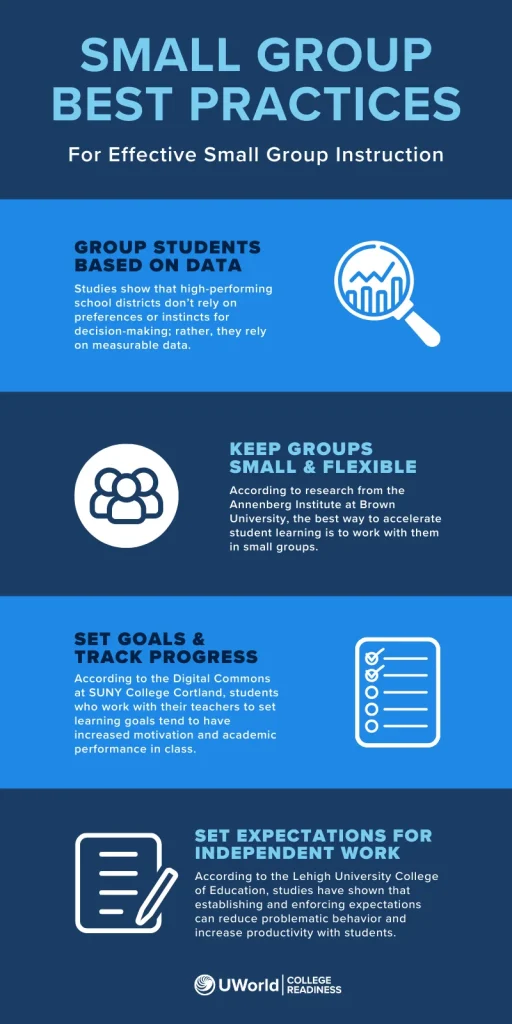
Putting Small Group Instruction Into Action with Blended Learning
Combining small group instruction with blended learning tasks is a simple way to implement small groups into an AP class efficiently and effectively. Blended learning tasks combine technology with traditional classroom activities to create a well-rounded learning experience.9 Contrary to popular belief, independent and group learning tasks are not just for young kids; independent assignments and activities work well for all age groups and subjects, and ensure educators have time to work in small groups with their students.
There are countless ways to run station rotations and an even greater number of activities that can be used for them, but the main idea of stations involves having students complete independent and/or collaborative peer learning activities while the teacher is working with other students. An example of blended learning stations might be:
- Small Groups with Teacher
- Independent Technology Practice
- Independent Hands-On Activity
- Collaborative Group/Partner Activity
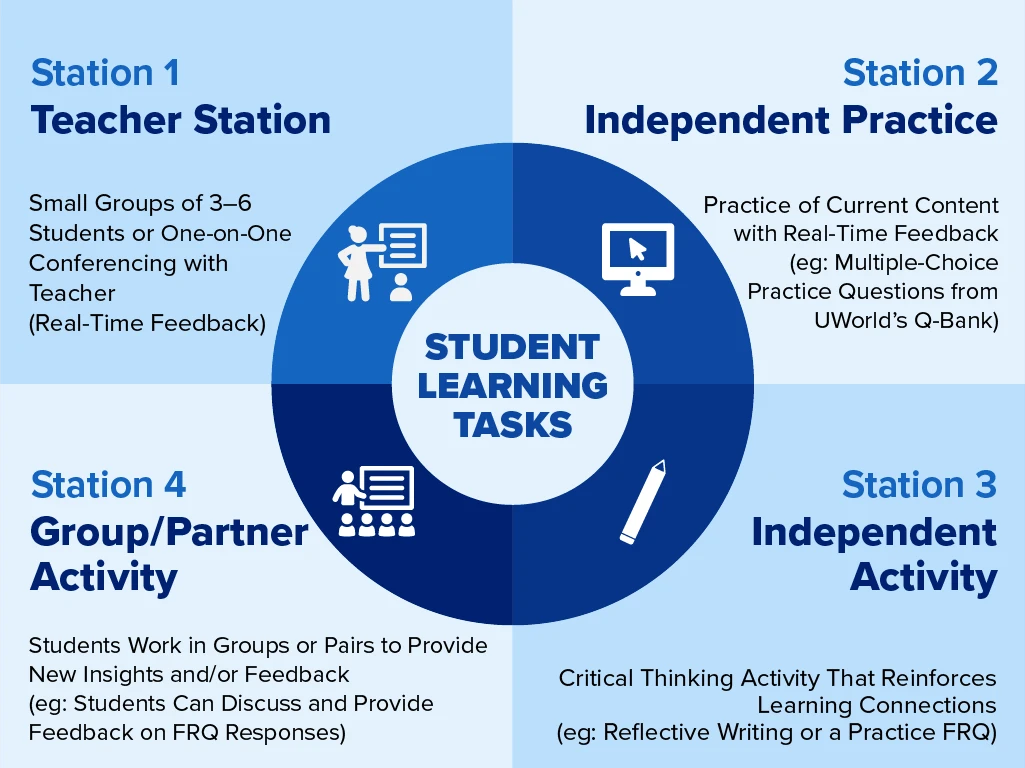
Small group instruction is a powerful way to help AP students who struggle with learning gaps. It allows teachers to tailor their instruction to each student’s needs, making difficult concepts easier to understand. To make small groups work well, AP teachers should use data to group students, follow small group best practices, and combine them with blended learning stations as a practical way to make it all work.
Discover how UWorld’s Learning Tools can provide you with the right data and practice questions to help you get started with small groups in your classroom!

References
- U.S. Department of Education. (n.d.). Competency-Based Learning or Personalized Learning. Office of Elementary & Secondary Education. https://oese.ed.gov/archived/oii/competency-based-learning-or-personalized-learning/
- Lewis, K., & Kuhfeld, M. (2023, July). Education’s long covid: 2022–23 achievement data reveal stalled … nwea.org. https://www.nwea.org/uploads/Educations-long-covid-2022-23-achievement-data-reveal-stalled-progress-toward-pandemic-recovery_NWEA_Research-brief.pdf
- Yanoski, D. (2020, July 15). Personalizing education to close learning gaps. Institute of Education Sciences (IES) Home Page, a part of the U.S. Department of Education. https://ies.ed.gov/ncee/rel/Products/Region/central/Blog/20067
- Mervosh, S. (2023, July 11). U.S. students’ progress stagnated last school year, study finds. The New York Times. https://www.nytimes.com/2023/07/11/us/reading-math-test-scores-education-nwea.html
- Datnow, A., Park, V., & Wohlstetter, P. (2007). Achieving with data – vahara-o2-public.s3.amazonaws.com. Vahara. https://vahara-o2-public.s3.amazonaws.com/media/21467/achievingwithdata.pdf
- Bassett, L. (2023, May 18). Three reasons why small groups are best for high-impact tutoring. Three Reasons Why Small Groups are Best for High-Impact Tutoring. https://blog.sagaeducation.org/three-reasons-why-small-groups-are-best-for-high-impact-tutoring#:~:text=According%20to%20the%20Annenberg%20Institute,a%20tutor%20at%20a%20time
- LeFever, A. (2022, April 24). SUNY College Cortland Digital Commons @ Cortland. Digital Commons Cortland. https://digitalcommons.cortland.edu/cgi/viewcontent.cgi?article=1158&context=theses
- Lehigh University. (n.d.-a). Creating expectations. College of Education. https://ed.lehigh.edu/center-for-promoting-research-to-practice/resources-for-teachers/class-wide-interventions/expectations#:~:text=Expectations%20provide%20the%20basis%20for,reduce%20instances%20of%20problem%20behavior
- Leggett, C. (2023, July 25). A beginner’s Guide to Blended Learning. The Talent Development Partner for Public Schools. https://engage2learn.org/blog/2020/01/31/a-beginners-guide-to-blended-learning
- The benefits of small group instruction. The Learning Lab Covina. (2023, June 7). https://thelearninglabcovina.com/f/the-benefits-of-small-group-instruction
- Cleveland School District. (n.d.). How can I compose groups? – cleveland school district. Cleveland K12. https://www.cleveland.k12.ms.us/cms/lib/MS01910477/Centricity/Domain/55/Small_Group_Instruction.pdf
